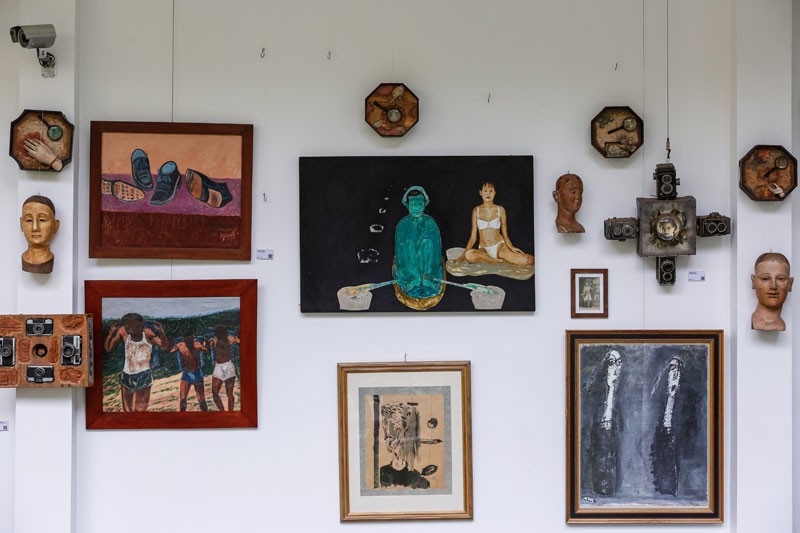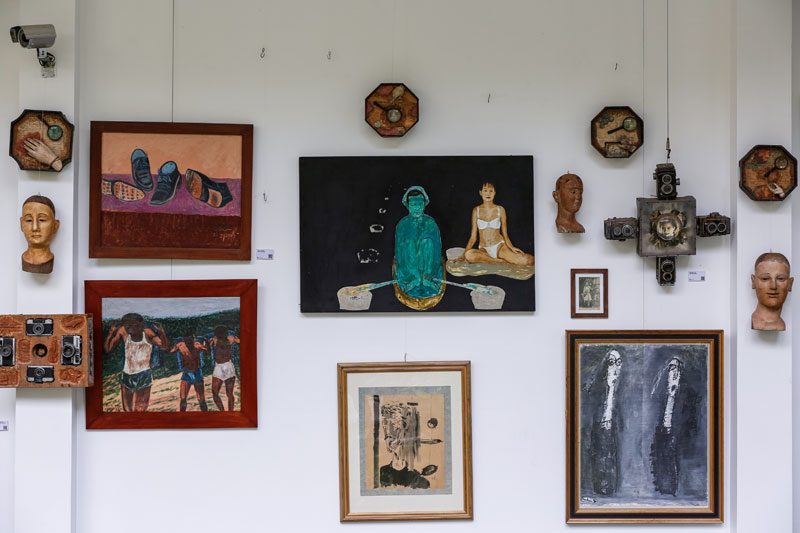Eclectic paintings, odd sculptures and antique bric-a-brac clutter the walls of Phnom Penh’s Plantation hotel.
Behind this peculiar exhibit of more than 150 pieces is an elusive man: Jean-Pierre Klondike, a French-American gallivanter who amassed the works over the course of two decades in Southeast Asia.

Works by Cambodian artists Svay Ken, Leang Seckon and Yim Maline hang next to those by Vietnamese painters Truong Tan and Bui Xuan Phai—united only by the collector’s taste.
Mr. Klondike is the son of a French diplomat and a brothel owner from Montana who grew up in Alaska. He also has another quirk: He doesn’t exist.
He is the elaborate creation of an American artist and collector who has lived and exhibited in Vietnam and Cambodia for the past 15 years, and who asked to be identified only by his initials, B.E.
“I would say he’s a rarefied dilettante,” said the artist, who fashioned a detailed backstory for the imaginary Mr. Klondike.
“This is someone who basically walked the streets, went into homes and shops and studios and picked up whatever he liked. And it just accumulated.”
Titled “The Klondike Collection,” the exhibition, which opens tonight, raises fascinating questions about the role of an art collector.
The modern history of art collecting is rooted in 17th-century Europe, and flourished in the colonial era, when Europeans picked up souvenirs from faraway lands. Mr. Klondike’s cache is reminiscent of the cluttered parlors of his Victorian predecessors.
“This is harkening back to former times, but actually most of the work is contemporary,” the artist said.
But Mr. Klondike is not a typical modern-day collector who buys art with regard for its cash value. Instead, he “just collects.”
Nonetheless, the project illustrates the power of the collector: The exhibit is more a representation of Mr. Klondike’s vision than that of any individual artist whose work is on display.
“That’s part of it,” B.E. said, explaining the shift that occurs when a work of art is purchased by a collector.
“When an artist makes a piece of work and puts it out in the world and then somebody buys it and collects it, usually the relationship with that work is over,” he said.
“That piece might get sold five times down the line and the artist will have nothing to do with it,” he added. “Artists now are pushing for getting a cut of future auctions, which is interesting.”
The role of a collector is accentuated in Southeast Asia, where foreigners do most of the buying.
“They want to see Cambodia or Vietnam in that work and they want to feel like a native made it, a native’s sweat and fingerprints are on it,” the artist said.
Meanwhile, “you have people waiting to be discovered” who may not conform to the expected aesthetic, he said.
“The Klondike Collection” questions the relationships between artist, collector, and audience in ways a typical white-wall exhibit cannot, while also taking viewers on a unique journey into the mind of a fictional maverick.
“Who knows,” the artist said, “maybe some other madman will say, ‘How much for it all?’”




